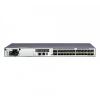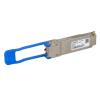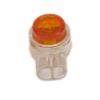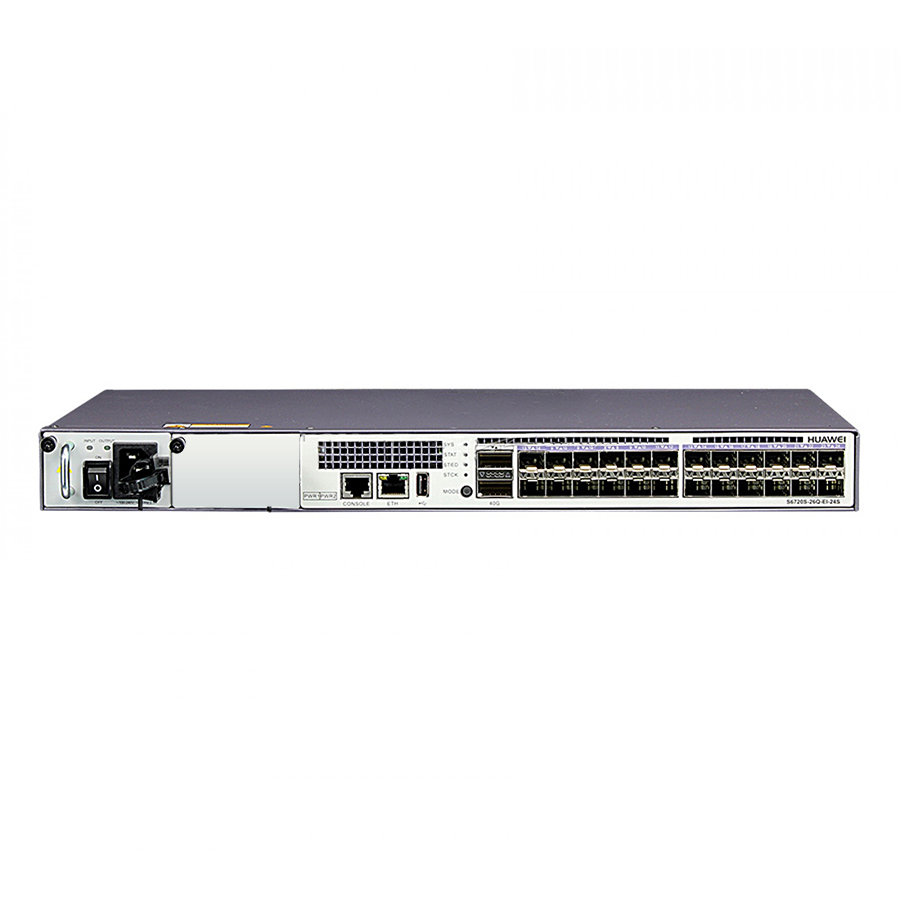-
€

Huawei S6720S-26Q-EI-24S-AC è uno switch gestito dotato di 24 slot SFP+ (10 Gb/s) e 2 slot QSFP+ (40 Gb/s). Il dispositivo fornisce una velocità della trasmissione dei pacchetti di 480 Mp/s e una capacità dello switching di 2,56 Tb/s. È perfetto per l'uso come switch di accesso nelle varie reti. Fornisce funzionalità di sicurezza avanzate, protegge da vari tipi di attacchi (come DoS, BPDU/root, IP/MAC spoofing, ARP spoofing e molti altri) e consente di controllare l'accesso. Fornisce inoltre molte possibilità di controllo della larghezza di banda (QoS) in base ai diversi tipi di informazioni (DSCP, VLAN ID, tipo ICMP ecc.) Ogni porta consente di creare 8 code utilizzando algoritmi come WRR, DRR, PQ, WRR + PQ e DRR + PQ. La funzione QoS avanzata garantisce un'eccellente qualità della fornitura dei servizi voce, dati e video.
Lo switch può essere gestito da CLI oppure Web NMS di Huawei. Supporta SNMP v1/v2/v3, NTP e SSH v2. È compatibile con il protocollo IPv6, inclusi RIP e OSPFv3. Lo switch consente la gestione in Layer3 (sia IPv4 che IPv6). Fornisce routing statico, RIP, OSPF, routing basato su policy, policy di routing e VRRP.
1 alimentatore AC 170 W incluso nel set!
Le caratteristiche:
- 24 porte SFP+ (10 Gb/s);
- 2 porte QSFP+ (40 Gb/s);
- velocità della trasmissione dei pacchetti: 480 Mp/s;
- capacità dello switching: 2,56 Tb/s;
- alimentatore AC hot swap;
- gestione Layer 2 e Layer 3;
- funzioni avanzate della protezione e QoS;
Specifiche:
| S6720-26Q-EI-24S-AC | |
| Porte |
24 slot SFP+ (10 Gb/s) 2 slot QSFP+ (40 Gb/s) |
| Slot di espansione | - |
| Indirizzi MAC | 288k MAC address entries MAC address learning and aging Static, dynamic, and black hole MAC address entries Packet filtering based on source MAC addresses |
| VLAN | 4K VLANs Guest VLAN and voice VLAN VLAN assignment based on MAC addresses, protocols, IP subnets, policies, and ports 1:1 and N:1 VLAN Mapping QinQ and selective QinQ |
| Routing IPv4 | Static routing, RIPv1, RIPv2, ECMP, and URPF OSPF, IS-IS, and BGP VRRP Policy-based routing Routing policy |
| Routing IPv6 | Static route RIPng OSPFv3 BGP4+ ISISv6 |
| IPv6 | Neighbor Discovery (ND) PMTU IPv6 ping, IPv6 tracert, and IPv6 Telnet 6to4 tunnel, ISATAP tunnel, and manually configured tunnel ACLs based on the source IPv6 address, destination IPv6 address, Layer 4 ports, or protocol type MLD v1/v2 snooping |
| Multicast |
Static Layer 2 multicast MAC address MSDP |
| QoS/ACL | Rate limiting on packets sent and received by an interface Packet redirection Port-based traffic policing and two-rate three-color CAR Eight queues on each port WRR, DRR, SP, WRR+SP, and DRR+SP queue scheduling algorithms Re-marking of the 802.1p priority and DSCP priority Packet filtering at Layer 2 to Layer 4, filtering out invalid frames based on the source MAC address, destination MAC address, source IP address, destination IP address, port number, protocol type, and VLAN ID Rate limiting in each queue and traffic shaping on ports |
| MPLS | MPLS, MPLS VLL, L3VPN |
| VPLS | Martini VPLS |
| Affidabilità | STP (IEEE 802.1d), RSTP (IEEE 802.1w), and MSTP (IEEE 802.1s) BPDU protection, root protection, and loop protection RRPP ring topology and RRPP multi-instance Smart Link tree topology and Smart Link multi-instance, providing the millisecond-level protection switchover SEP ERPS (G.8032 v2) BFD for OSPF, BFD for IS-IS, BFD for VRRP, and BFD for PIM E-Trunk |
| Protezioni | User privilege management and password protection DoS attack defense, ARP attack defense, and ICMP attack defense Binding of the IP address, MAC address, interface, and VLAN Port isolation, port security, and sticky MAC Blackhole MAC address entries Limit on the number of learned MAC addresses 802.1x authentication and limit on the number of users on an interface AAA authentication, RADIUS authentication and TACACS authentication SSH v2.0 Hypertext Transfer Protocol Secure (HTTPS) CPU defense Blacklist and whitelist MACSec |
| Super Virtual Fabric (SVF) | Working as the parent node to vertically virtualize downlink switches as one device for management, supports two-layer clients architecture Support as a client node to be managed by SVF parent |
| VXLAN | Supports the VXLAN function. Configured through the NETCONF protocol. |
| Gestione |
iStack (using service ports as stack ports) MAC Forced Forwarding (MFF) |
| Proprieta' ambientali |
Temperatura di funzionamento consentita: 0 - 1800m: 0-45℃ 1800 - 5000: si abbassa di 1°C ogni 220m
|
| Intervallo di tensione in ingresso |
Consigliato: 100 - 240 V AC, 50/60 Hz Massimo: 90 - 264 V DC, 50/60 Hz |
| Dimensioni | 44.4 mm x 442.0 mm x 250.0 mm (1.75 in. x 17.4 in. x 9.84 in.) |
| Altezza | 1U |
| Consumo energetico tipico | 109 W |






 Polski
Polski English
English Italiano
Italiano Español
Español Čeština
Čeština Српски
Српски Deutsch
Deutsch Ελληνικά
Ελληνικά Slovenský
Slovenský






